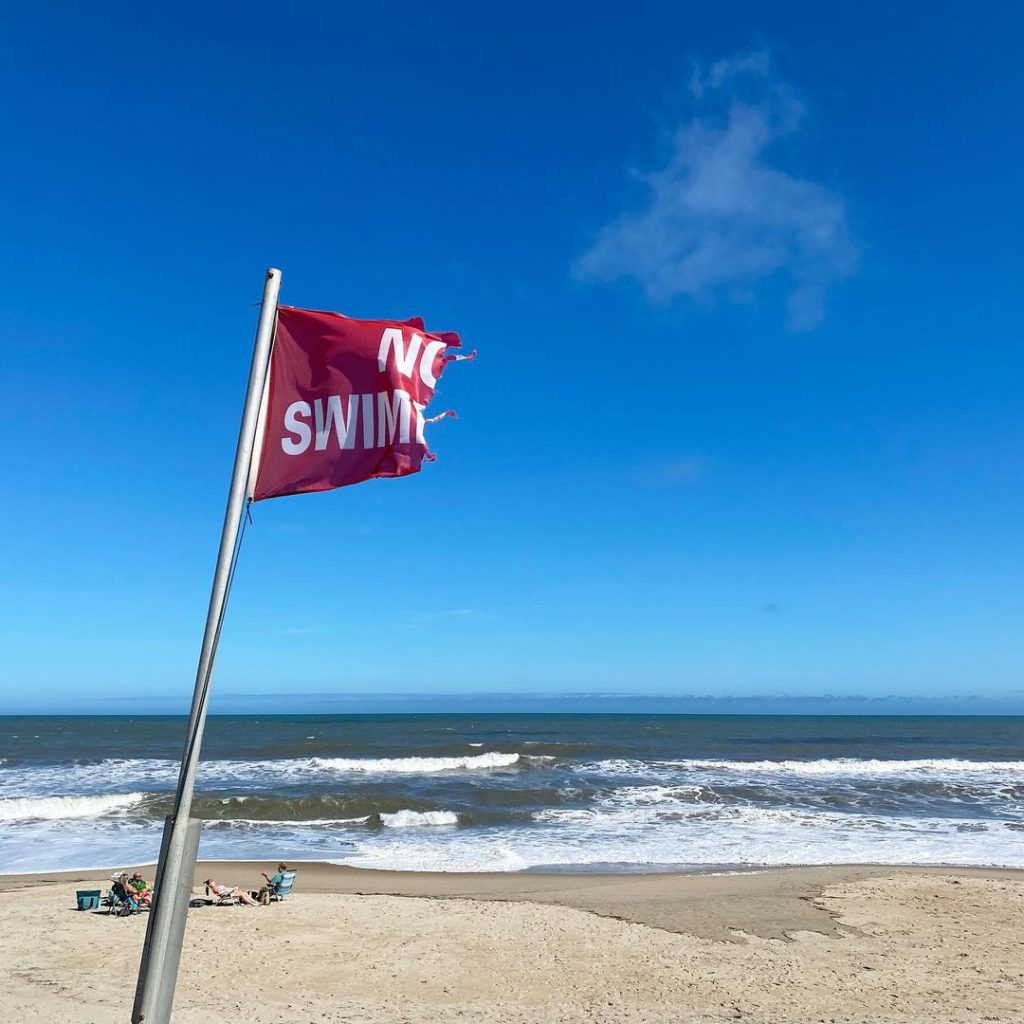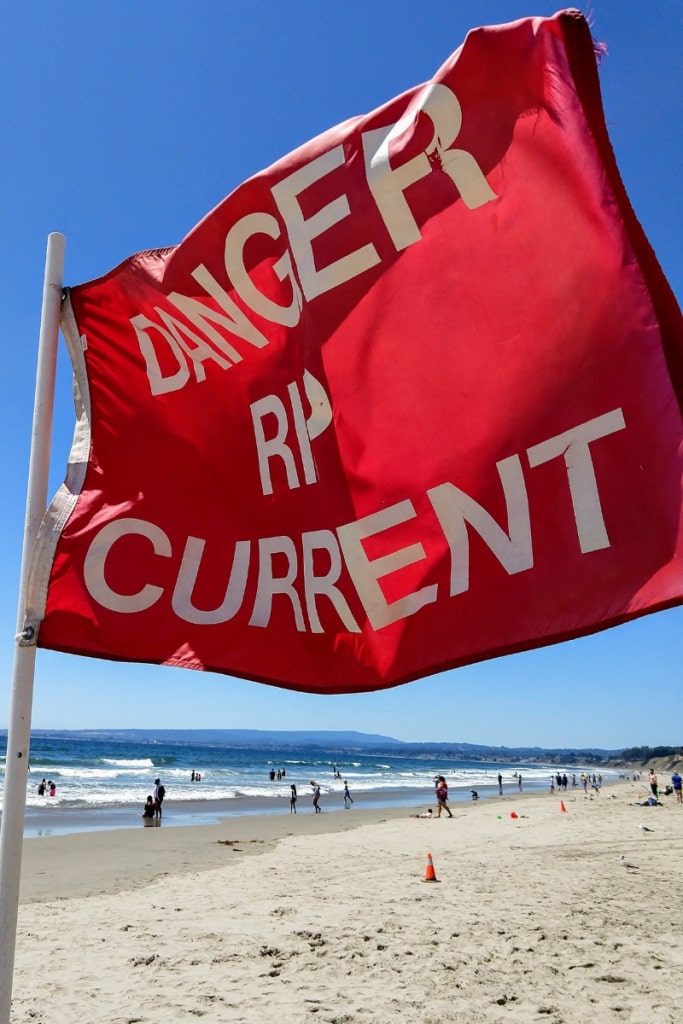Does your next vacation involve applying sunscreen as you stretch out on a beautiful barrier island, but the Maldives are too far away? Luckily, the outer banks are a stretch of barrier islands on the coast of North Carolina that eagerly host vacationers. More than 5 million visitors fill up quaint rentals in areas like the Four Seasons on these southern shores every year.
While an Outer Banks vacation means getting away from bustling city life, it does not mean you should let your guard down. There are some basic Outer Banks beach safety tips all vacationers and swimmers should be aware of. Let’s take a look.
Some General Outer Banks Beach Safety Tips

In the event of an emergency, lifeguards will have to move quickly. So please be mindful of where you mark your spot on the beach. Give area lifeguards ample beach access to run or move their roving patrols around to get to those in danger.
When you’re at the Outer Banks beaches, remember you’re in a public beach area. So please clean up your trash. Avoiding litter is not only considerate of other beachgoers and lifeguards,it is also good for the environment and ocean safety. The ocean is for swimming and is home to marine life – not your trash can.
Trash and left behind food items can also attract area pests, such as raccoons that prey upon sea turtle nests. If you leave a personal item behind on the beach overnight, understand that it will be thrown out.
Sand dunes protect against flooding and are home to sea vegetation and animals such as turtles. In this little ecosystem, dune vegetation receives valuable nutrients from turtle eggs. In other words, please be kind and leave the sand dunes and the nesting turtle families alone.
Swim On Lifeguarded Beaches

Perfect waves near these Southern Shores can easily change patterns and create havoc even for the best swimmer. To ensure that you get help in an emergency, try to swim in sight of lifeguard stands. Don’t get overconfident and assume you won’t ever need a lifeguard for ocean rescue.
Whether you are on a public beach in Nags Head, Kill Devil Hills, Kitty Hawk, or Duck, beachgoers can find a tanned and well-trained lifeguard on duty as long as you swim during their working hours. After hours, you should call 911 in the event of a water or medical emergency – so bring your phone to the beach. To play it safe, try to avoid swimming at night.
Let’s look at some of these highly trained heroes in action on Kill Devil Hills Islands. Remember, lifeguards are on duty from 9:30 a.m. until 5:30 p.m. daily throughout the islands.
Don’t Ignore Beach Flag Warnings

As you enjoy your vacation in the Outer Banks, please let lifeguards do their job. The ocean is as dangerous as it is beautiful. When you see a red “ No Swimming” flag at the beach entrance, this means swimmers will have to find something else to do, as swimming is not allowed.
The only potential exception to the red flag rule is serious bodyboarders and surfers with fins tethered to a boogie board. Their athletic skills allow them to maneuver around strong ocean currents and breaks.
When you enter the water during harsh ocean conditions, despite national weather service and lifeguard warnings, you will put yourself and potential rescuers in danger. Despite their training, a lifeguard is not exempt from losing their life during a rescue.
Look Out For Rip Currents

The ocean is vast, powerful, and unpredictable. One of the dangers of the unpredictable ocean involves rip currents. These fast-moving water currents can pull an Olympic swimmer away from the shore before he knows what is happening. When you see signs of a rip current, do your best to avoid the area. Bear in mind, rip currents often form near the pier.
If you observe obvious changes in water color, seaweed, and lines of foam quickly moving out to sea, or a channel of churning water, it is probably a rip current. Luckily, lifeguards leave signs warning of rip currents in the area.
Don’t waste energy trying to swim against it. When you find yourself suddenly caught up in one, the best way to handle the situation is to stay calm and swim with the current. Swimming parallel to the beach can work as well. You can swim back towards the safety of the shore once you are out of the rip current.
Check out this helpful demonstration on how to survive one of these currents if you get caught up.
Be Aware of Outer Banks Sea Life

There are jellyfish in the Outer Banks Waters. Most of them are harmless, but some of them do sting. Don’t worry, jellyfish stings are not poisonous – but slightly painful. Do your best to avoid reddish jellyfish or any jellyfish with tentacles. Clear-bodied jellyfish are pretty harmless.
Jellyfish often cluster around fishing piers, and some can even sting after they are dead. You will know that you have been stung by a jellyfish if you exhibit blisters, stinging pain, or itching and tingling after a swim. Swimmers can neutralize any jellyfish sting venom with vinegar and remove tentacles with tweezers.
Crime Rates In The Area
The Outer Banks Islands certainly look ideal and calm, but that doesn’t mean the area is 100% exempt from crime. If you own a rental house in the area, make sure you properly board it up. This protection will prevent drunk party-goers from breaking in during the off-season. Vehicle theft and burglaries can happen in the area, but the most common crime here is property crime.
Whether you are here to celebrate national holidays like Memorial Day, Labor Day, catch a wave on your surfboard, relax on the beach, or flirt with a cute lifeguard, your Outer Banks vacation should not only be fun, it should be safe. Pay attention to water conditions and listen to beach professionals. Hopefully, these tips will help you prepare for your next venture on these beautiful American Islands.